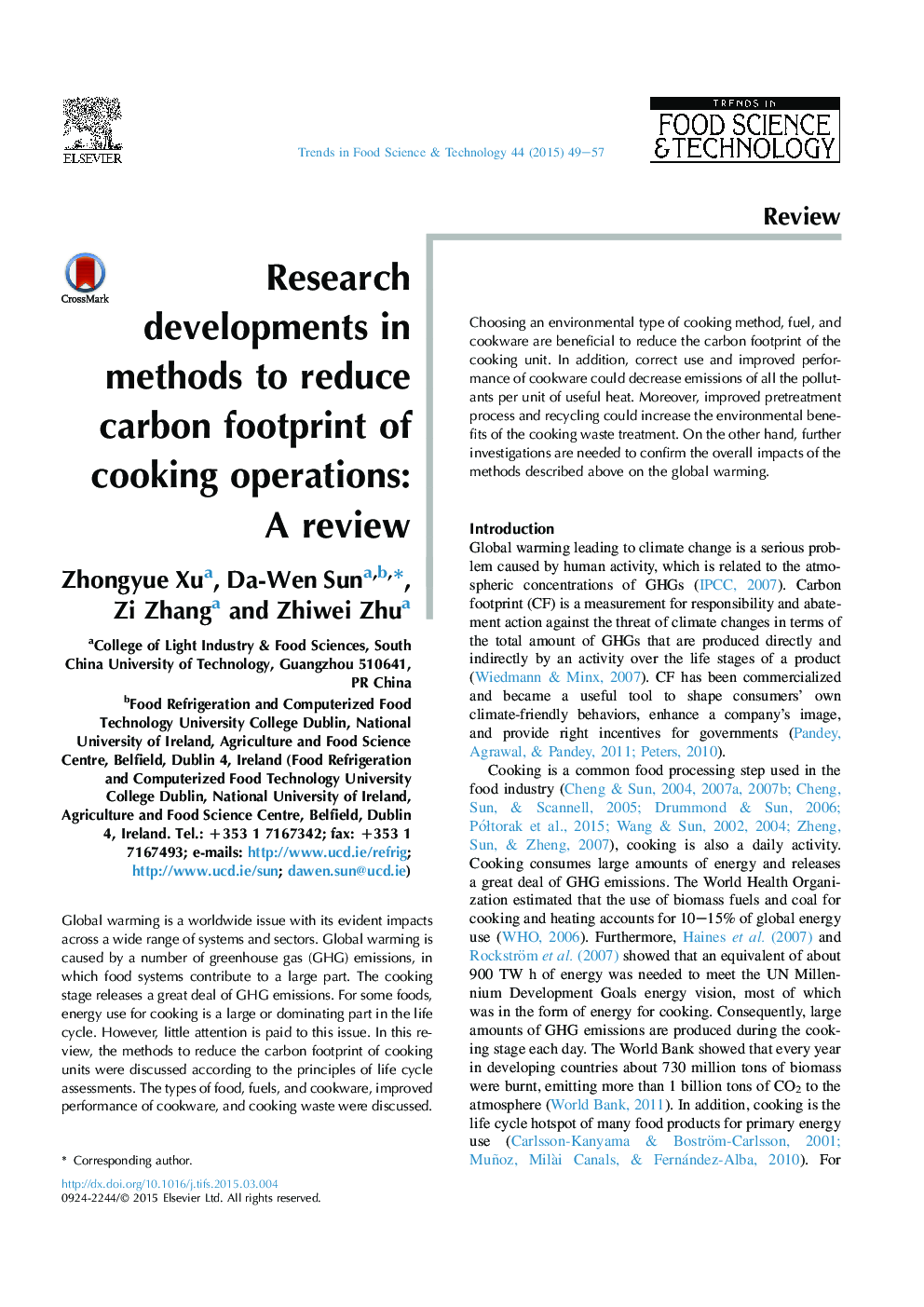| Article ID | Journal | Published Year | Pages | File Type |
|---|---|---|---|---|
| 2099755 | Trends in Food Science & Technology | 2015 | 9 Pages |
•Methods to reduce carbon footprints of cooking units were discussed.•Types of cooking methods, fuels, and cookware all affect carbon footprints.•Improved performance of the cookware could decrease emissions.•Improved pretreatment process and recycling could decrease emissions.
Global warming is a worldwide issue with its evident impacts across a wide range of systems and sectors. Global warming is caused by a number of greenhouse gas (GHG) emissions, in which food systems contribute to a large part. The cooking stage releases a great deal of GHG emissions. For some foods, energy use for cooking is a large or dominating part in the life cycle. However, little attention is paid to this issue. In this review, the methods to reduce the carbon footprint of cooking units were discussed according to the principles of life cycle assessments. The types of food, fuels, and cookware, improved performance of cookware, and cooking waste were discussed. Choosing an environmental type of cooking method, fuel, and cookware are beneficial to reduce the carbon footprint of the cooking unit. In addition, correct use and improved performance of cookware could decrease emissions of all the pollutants per unit of useful heat. Moreover, improved pretreatment process and recycling could increase the environmental benefits of the cooking waste treatment. On the other hand, further investigations are needed to confirm the overall impacts of the methods described above on the global warming.
